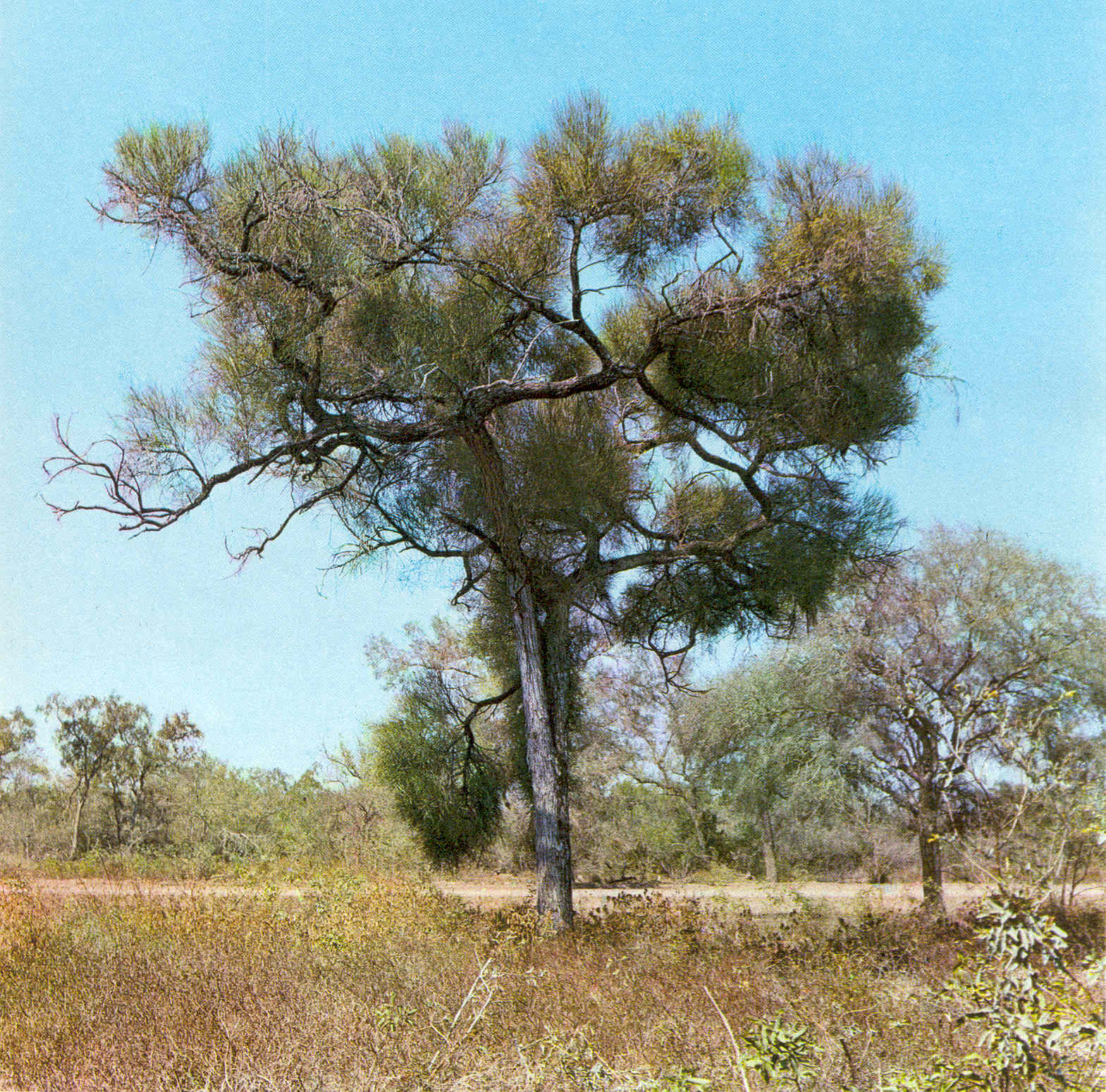- Prosopis kuntzei
Taxobox
name = Itín - Barba De Tigre

status = LR/lc | status_system = IUCN2.3
regnum =Plant ae
divisio = Magnoliophyta
classis =Magnoliopsida
ordo =Fabales
familia =Fabaceae
genus = "Prosopis "
species = "P. kuntzei"
binomial = "Prosopis kuntzei"
binomial_authority = Harms
synonyms = Prosopis casadensis"Prosopis kuntzei" (synonym "Prosopis casadensis") is a
South America n leguminous tree species that inhabits the westernmostGran Chaco forests covering areas ofArgentina ,Bolivia , andParaguay , where it acts as natural component. It has also been able to colonize the nearby pasture sabanas. [Morello, J.N. Et al. 1971. “Los Vinalares de Formosa”. INTA. Serie fitogeográfica No 11. Bs. As.] It's commonly referred to as itín, palo mataco, carandá or barba de tigre. It is adapted toarid climate , but can also survive flooded ground for a long time.Morphology
It is a smooth horrid tree, 4 to 10 meters high. Its trunk measures 40 to 60cm in diameter and is highly branched and rigid, presenting uncountable spines. Leaves are small (3-5 mm long),
bipinnate , tending to fall very early in spring after young sprouts become spines themselves.Inflorescence consists of lonely appearing racemes 3-7 cm long. Flowers are white-yellowish, scented, and 3 mm long. The fruit is a dehiscent dark violet pod, 10-17 cm long, straight shaped and heavily scented. It contains a starchy paste inside. Seeds are flat, egg-shaped of chestnut colour. They measure 7-1 0mm long and 5–6 mm wide. Wide new sprouts come out between July and November. [Burkart, A. 1976. “A Monograph of the Genus Prosopis”. Journal Arn. Arb. 57 (3–4)]This tree flowers between September and November and fructifies between December and January, holding its fruits until early August.
The sapwood is light yellow, while the heartwood is chestnut brown with patches of dark violet. The wood has a fine texture and straight to wavy to interlocked grain. When first chopped it is very scented. This species wood is one of the densest and notably most durable of the genus. [Legname, P. 1982. “Arboles indígenas del NW Argentino”. Opera Lilloana XXXIV. Tucumán, Argentina]
Usage
Because of its technological wood properties, Prosopis kuntzei is considered an important
Mimosaceae species. However timber is available in small sizes and limited amounts, therefore it's used rather locally to manufacture crafts like statues, handles, wooden wheel parts, musical instruments and staffs. Due to its almost black colour, and remarkable hardness, it can be used as substitute ofebony .
=References
Wikimedia Foundation. 2010.
